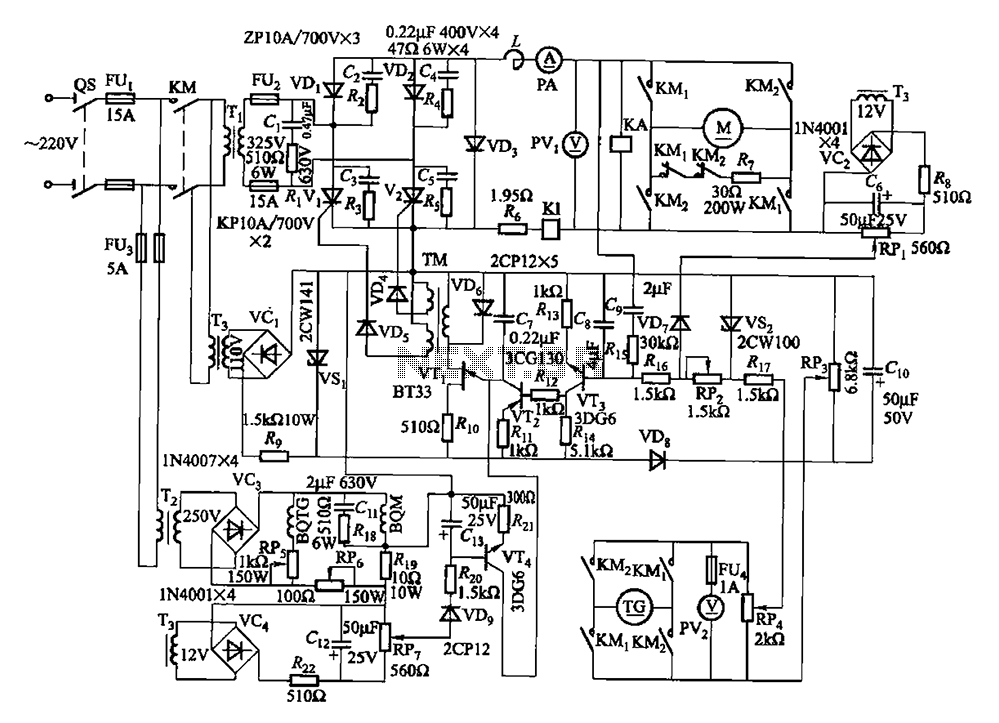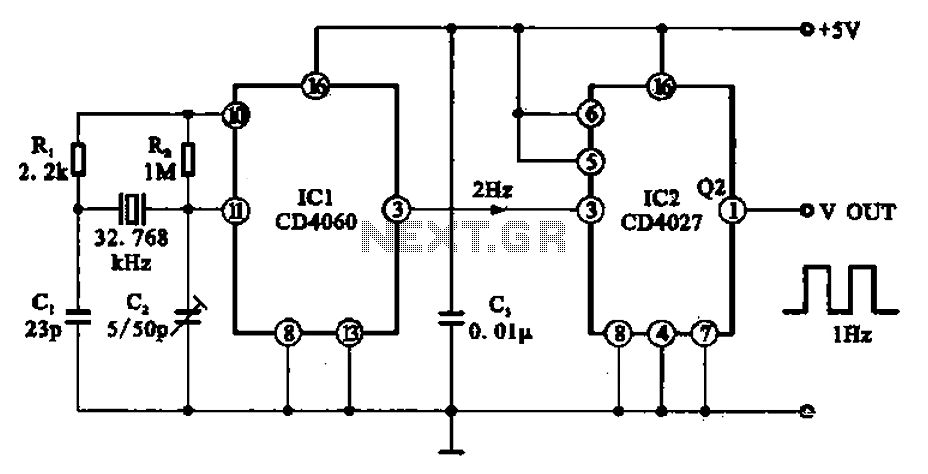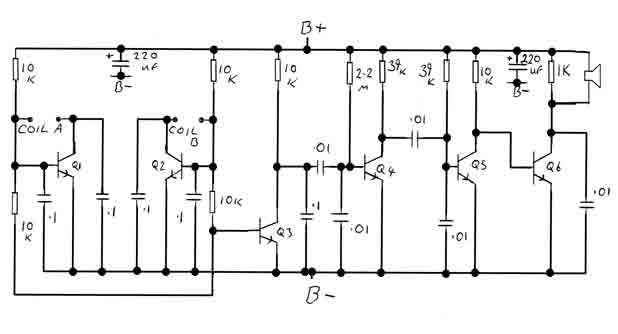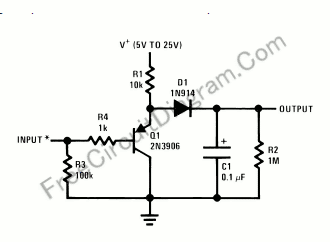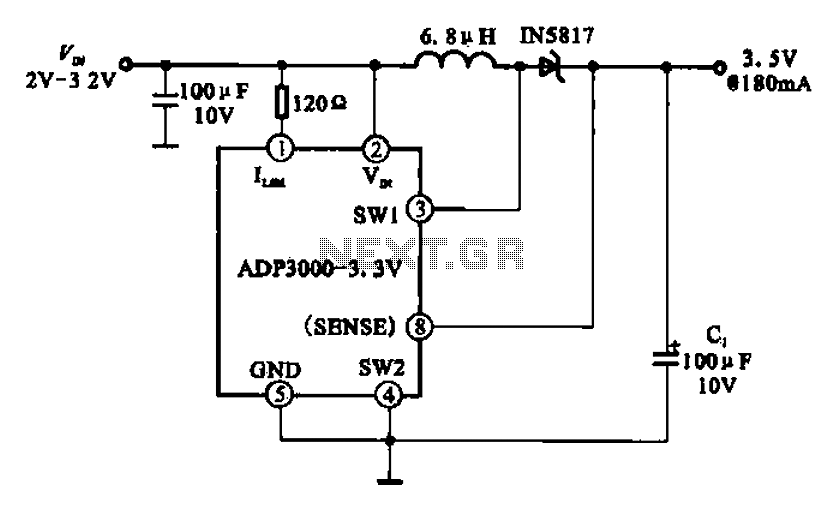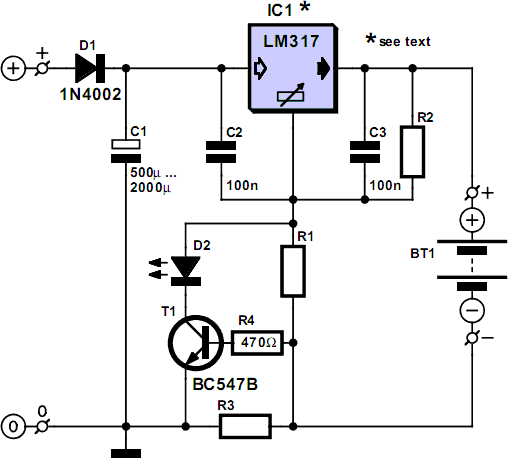
Simple Game Circuit
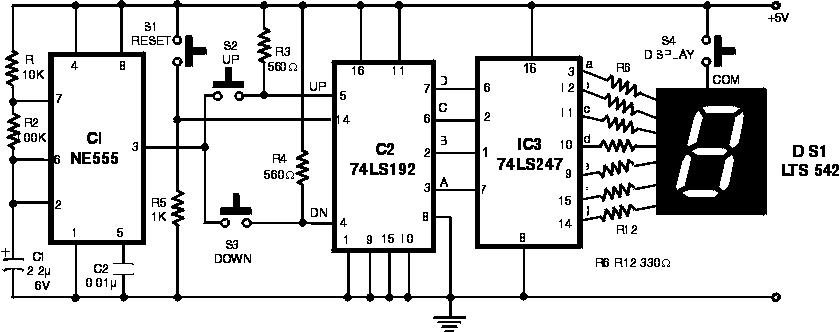
This is a simple game circuit designed for multiplayer enjoyment. The objective is to score one hundred points within a limited timeframe. To restart the game, the S1 button switch must be pressed. It is important to ensure that the output voltage does not exceed 5 volts to prevent damage to the components. A copper PCB board is recommended for constructing this circuit. Additionally, the circuit is not advised for use by children who are not familiar with electronics and live current.
The described game circuit operates as a basic point-scoring system suitable for friendly competition. The game mechanics involve players taking turns or simultaneously engaging in activities that contribute to point accumulation, with the first player to reach one hundred points declared the winner.
The circuit design includes a microcontroller or timer IC to track the score and manage the game duration. It is essential to incorporate a reset mechanism, which is facilitated by the S1 button switch. When pressed, this button activates a reset function within the circuit, clearing the current score and restarting the game timer.
Power supply considerations are critical; the circuit should be powered by a regulated 5V source, as exceeding this voltage may lead to component failure. It is advisable to utilize a copper PCB for its excellent conductivity and thermal management properties, ensuring reliable performance during gameplay.
For safety and usability, particularly in environments with children, it is crucial to include proper insulation and protective measures to mitigate the risks associated with live current. Components should be securely mounted on the PCB, and any exposed connections should be safeguarded to prevent accidental contact.
In summary, this game circuit serves as an engaging and interactive platform for users, promoting competitive play while necessitating careful attention to design specifications and safety precautions.This is a very simple game circuit. You can play this with your friends. To win this game one has to scores hundred points in very short time. Incase if you want to restart the game you need to press S1 button switch. When supplies the output voltage make sure you do not use over 5 Volts as it can damage the components. We recommend you to use cop per PCB board to build this circuit. Also we do not recommend any of our circuits for kids who do not familiar with electronics and live current. 🔗 External reference
The described game circuit operates as a basic point-scoring system suitable for friendly competition. The game mechanics involve players taking turns or simultaneously engaging in activities that contribute to point accumulation, with the first player to reach one hundred points declared the winner.
The circuit design includes a microcontroller or timer IC to track the score and manage the game duration. It is essential to incorporate a reset mechanism, which is facilitated by the S1 button switch. When pressed, this button activates a reset function within the circuit, clearing the current score and restarting the game timer.
Power supply considerations are critical; the circuit should be powered by a regulated 5V source, as exceeding this voltage may lead to component failure. It is advisable to utilize a copper PCB for its excellent conductivity and thermal management properties, ensuring reliable performance during gameplay.
For safety and usability, particularly in environments with children, it is crucial to include proper insulation and protective measures to mitigate the risks associated with live current. Components should be securely mounted on the PCB, and any exposed connections should be safeguarded to prevent accidental contact.
In summary, this game circuit serves as an engaging and interactive platform for users, promoting competitive play while necessitating careful attention to design specifications and safety precautions.This is a very simple game circuit. You can play this with your friends. To win this game one has to scores hundred points in very short time. Incase if you want to restart the game you need to press S1 button switch. When supplies the output voltage make sure you do not use over 5 Volts as it can damage the components. We recommend you to use cop per PCB board to build this circuit. Also we do not recommend any of our circuits for kids who do not familiar with electronics and live current. 🔗 External reference
Warning: include(partials/cookie-banner.php): Failed to open stream: Permission denied in /var/www/html/nextgr/view-circuit.php on line 713
Warning: include(): Failed opening 'partials/cookie-banner.php' for inclusion (include_path='.:/usr/share/php') in /var/www/html/nextgr/view-circuit.php on line 713
